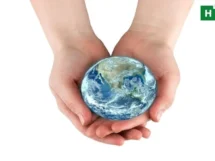The sea-level rise, frequent cyclonic storms, and disappearing islands of the Sundarban delta are creating climate refugees in large numbers. India must acknowledge them for the climate action plan before it gets late.
Twenty-five-year-old Sumit Pramanik is a mechanical engineer working five days a week in Kolkata, India. Every Friday evening, he packs his bag to return home to his village at Ghoramara island in the South of West Bengal, twelve kilometres from mainland Kakdwip. He takes the only government-run boat that sails him to his island, where the Muri Ganga, the distributary of the majestic Hoogly river, meets the sea.
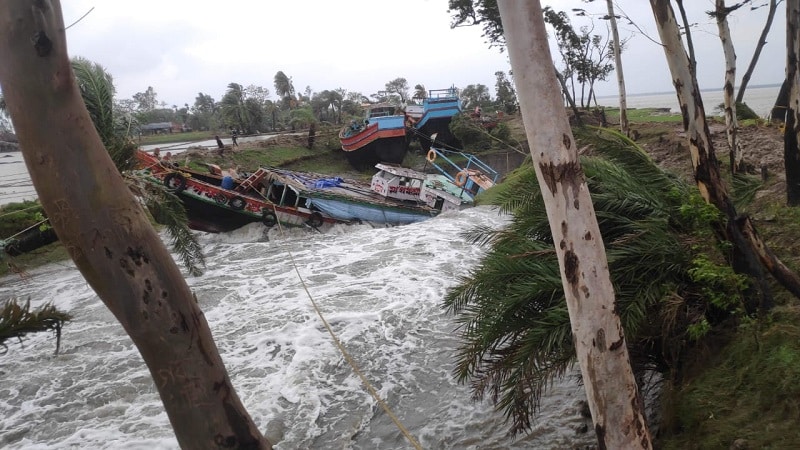
On regular days, he doesn’t find the boat. The high tides are uncertain these days. The boats tend to get stuck in the middle of the sea in the heavy silt brought by the rivers. So, he waits for hours or days for conducive waters to sail through the river to his village. Since Pramanik’s family of six lives back on the island, he must return home with money and groceries every weekend.
“When the boats are not ready to sail, people wait. Most days, boats cannot sail to the island, for the sea is raging”. “But I want to return, fearing that my family will be washed away in my absence.”
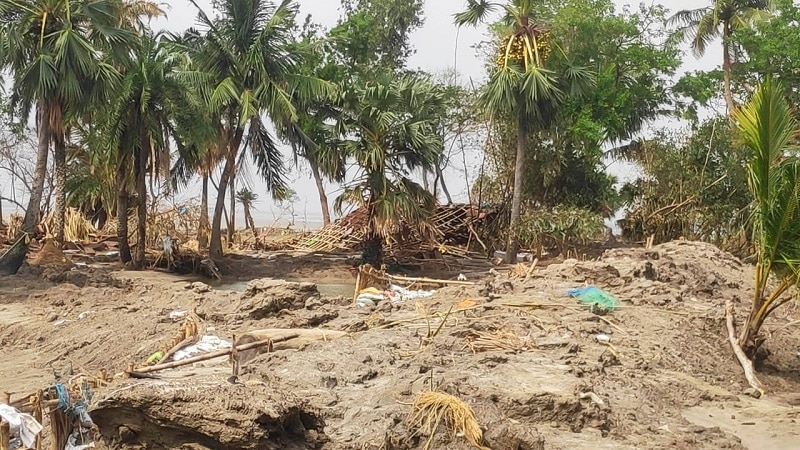
On Monday mornings, when the only government-run boat takes him back to the mainland, he says a prayer for his disappearing village, Ghoramara, ninety-two kilometres from Kolkata. It is one of the several inhabited villages slowly disappearing because of the rising sea. These days the sea is rising faster because of global warming, as warned by the Intergovernmental Panel on Climate Change (IPCC) – the United Nations body for assessing the science related to climate change. It is swallowing the vulnerable islands much faster than experts had predicted until last year. Last year in May, when the severe tropical cyclone YAAS made landfall in Ghoramara, homes were washed away, the land was inundated, and the jetty was damaged for months. A recent makeshift anchoring arrangement for boats connected the island back to the mainland.
After the cyclone, thirty-five families of the most vulnerable living on the edge were selected by the local panchayat of Sagar block and given land on the neighbouring island, four kilometres away. Several others are now seeking such assistance. But many people cannot just wait. They walk past with the little things they had to shift to other locations; their homes are gutted, their crops are destroyed, and their land is submerged permanently.
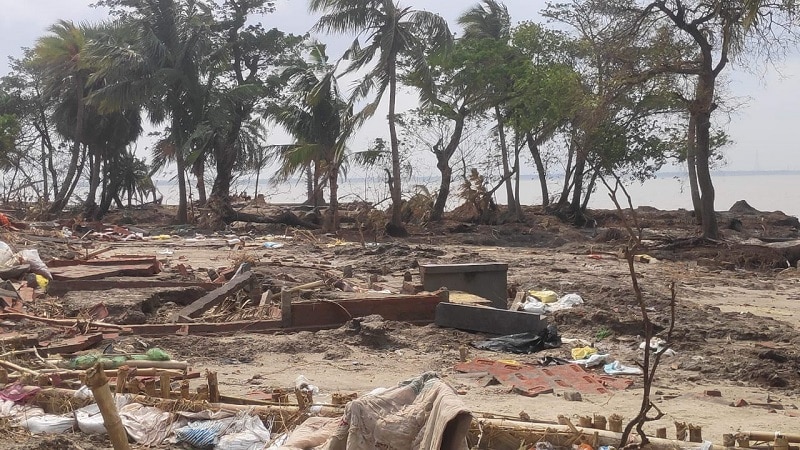
Similar to Pramanik, Samir Jana, a reporter lived all his life in the village. He says every evening, he waits for the best pictures of the rising sea that comes in to submerge homes and people together. Ghoramara, the village with a population of more than forty-five thousand people until two decades ago, is left with just about two and a half thousand people now. “People migrated on their own. No one wants to be washed away in the high tide”, says Jana. “Those who could afford to buy land migrated to the nearby Sagar Island. But most of us have nowhere to go. Who wants to turn a refugee in your own home?”.
In 1995 Pramanik and Jana were born on the Ghoramara island after their families were rehabilitated when the densely populated Lohachura island, three kilometers from Ghoramara, went inside the sea. Before that, Agunmaari island, too, had gone entirely into the sea. The local government then supported people to be rehabilitated on Sagar and the Ghoramara Island. The state government gave land papers to 100 families at the Bankim Nagar at Dashpara at Sagar block. But now, the Sagar Island, the largest island in the Sundarban delta, famous as a Hindu pilgrimage, also faces the threat of fast erosion. The Kapil Muni temple faced the wrath of the rising sea when the YAAS cyclone struck. The sea eroded the land and swept away significant portions of it.
The displacement and the migrating population of Ghoramara and other islands such as Sagar are India’s Climate refugees. The fertile island Ghoramara produces the best Dudeshwar rice, the saline-resistant variety famous for its sweetness. Villagers now say that the rice variety cannot sustain the frequent cyclones. The unpredictable flash floods and storms wash away the agricultural land every night. The pucca building of the government Hathi Gola High school on the island, where Pramanik and Jana studied as children, too is dilapidated. Yet it serves now as a shelter home when floods come.
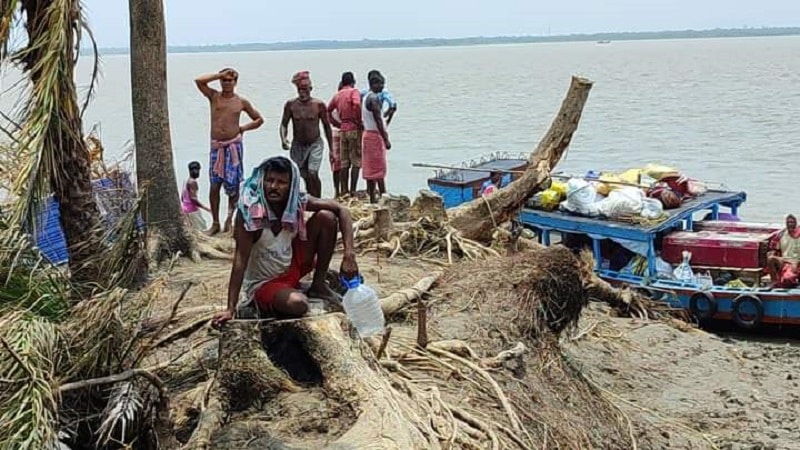
This southern part of the Sundarban delta – the giant collage of mangrove islands, home to the Royal Bengal Tiger and many rare and endangered animals, represents the real face of climate change affecting India. Several islands are disappearing and slowly being swallowed by the deep sea and the rising tides. In the delta where saltwater from the Bay of Bengal mixes with fresh water from three of India’s major rivers — the Ganges, the Brahmaputra, and Meghna — water from the distributary Muri Ganga rises and falls dramatically, drowning one-third of the land that keeps disappearing and reappearing every day. People go by the Hindu moon calendar to understand the behaviour of the rising and falling tides. Now, there is severe unpredictability in the calendar too with the uncertainty of storms and tides.
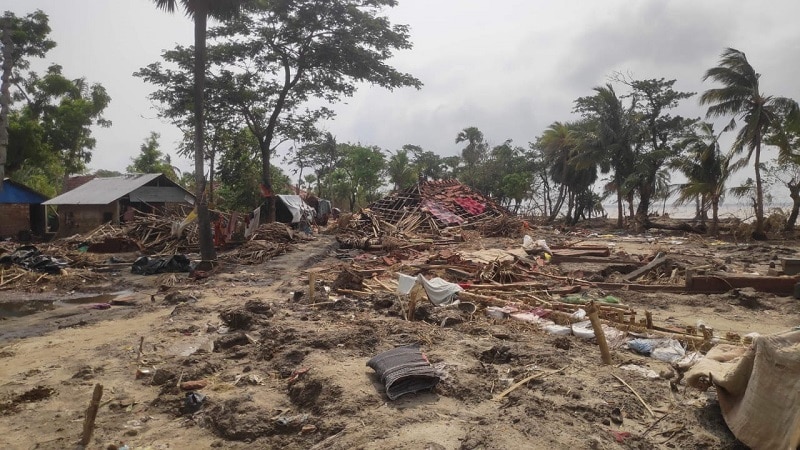
An Internal Displacement Monitoring Centre (IDMC) report identifies approximately 1.4 crore people in India who have been displaced due to environmental disasters and climate change. The report mentions that the “costs of climate inaction” will force over 4.5 crore people to migrate from their homes by 2050.
The center’s data shows that over 38 lakh new displacements took place in India due to environmental disasters in 2020, approximately 1000 times more than the 3,900 displacements caused by internal or external conflicts.
“Given the scale of climate refugees in India, the government must expedite work on an action plan to prevent the deterioration of the situation and rehabilitate the displaced through effective regulations and laws,” explains environmental activist Dr. Amlesh Misra of Paribesh Parishad.
Climate refugees in India are not acknowledged and recognized explicitly as at-risk community under any specific law. As a result, scores of climate-displaced people have no identity or recourse to relief and rehabilitation. Even at the global level, there is a conspicuous ignorance of clear-cut laws that deal with the subject of climate refugees. In this scenario, it would help India to take the first move by launching social initiatives and legislative laws that recognize the plight of the climate refugees and provide them the chance to reclaim life, dignity, and livelihoods.
“This path-breaking initiative will bring recognition to India on the international forums and help showcase India’s climate action plan'” says Dr. Amlesh Misra of Paribesh Parishad, who has worked on the rehabilitation of climate-displaced people for three decades in the Sundarbans area.









